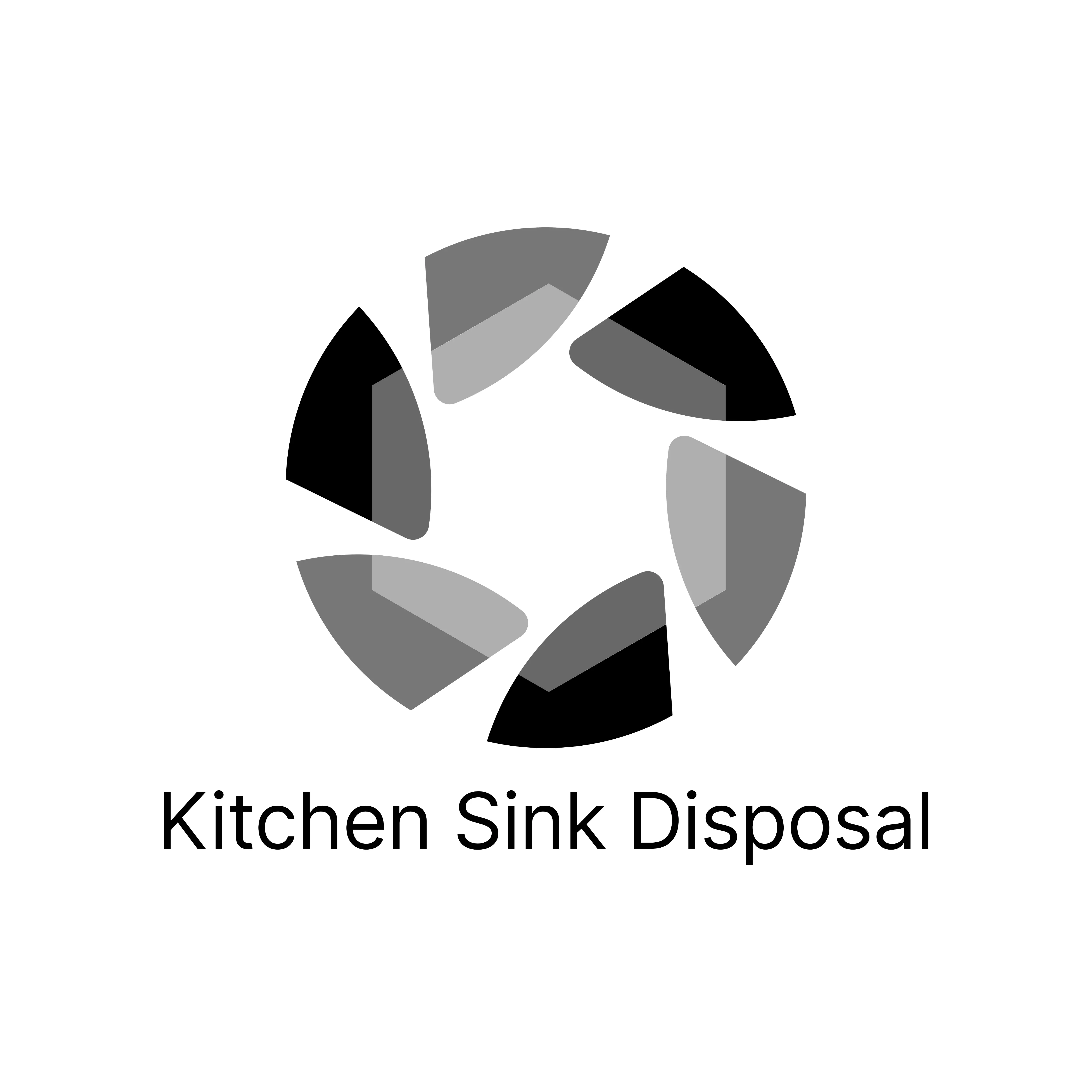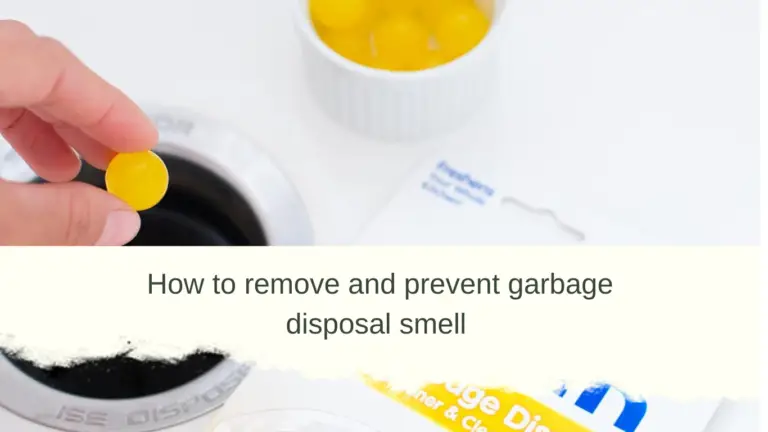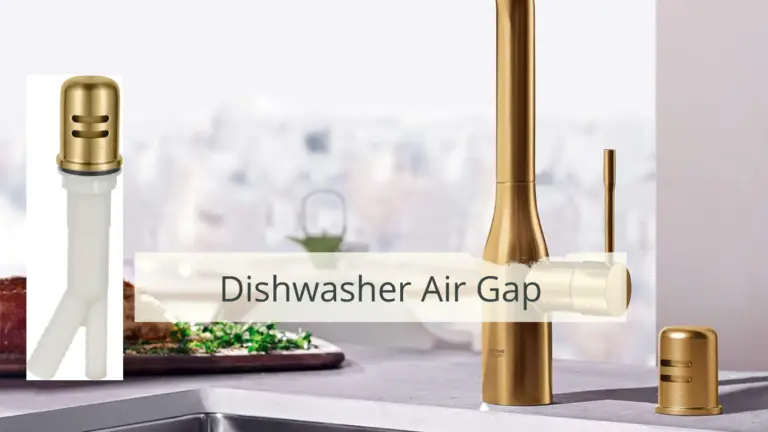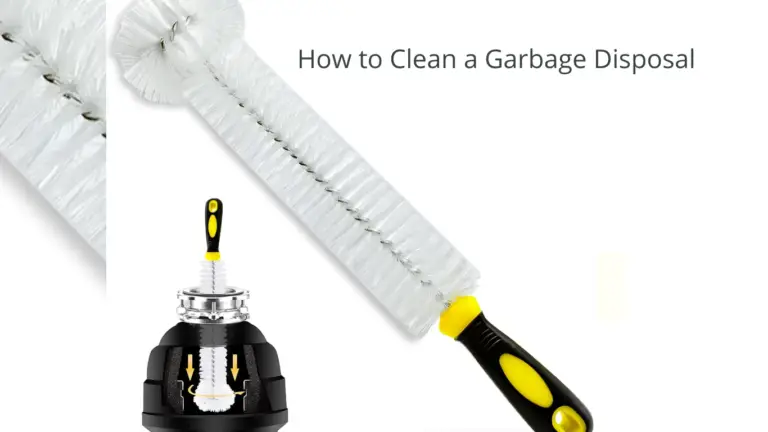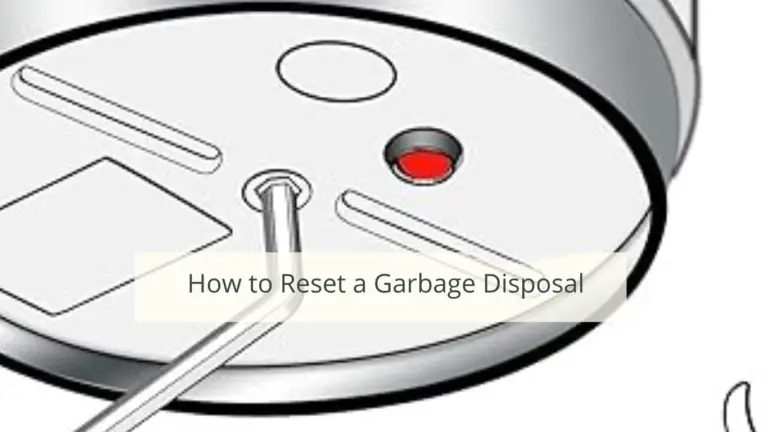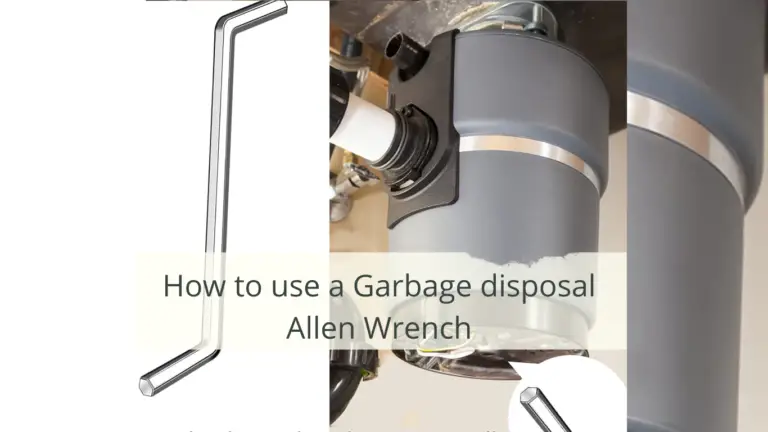How to get rid of fruit flies in a garbage disposal
This post may contain affiliate links which means I may receive a commission for purchases made through links.
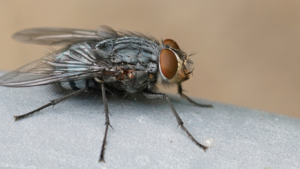
While fruit fliers are not as dangerous as other fly species or as damaging as cockroaches and rats, they can be pretty annoying. In addition, these pesky creatures lay their eggs in food waste, making your kitchen look unhygienic and gross. Even worse, fruit flies hang out in swarms, meaning they will infest your home in no time if you don’t deal with them promptly. For that reason, if you notice that there are fruit flies in your home, you need to get rid of them quickly, especially if you’ve got a garbage disposal. Otherwise, they will bleed and infest your home in no time! But how do you get rid of fruit flies in a garbage disposal? This article has a few effective methods of eliminating fruit flies in your garbage disposal and preventing them from coming back.
But before we get there, you need to identify whether you’re dealing with fruit flies, gnats, or drain flies! After all, you’ll need a slightly different approach to deal with each type of fly.
Fruit Flies Vs Gnats Vs Drain Flies; What’s the Difference?
Gnats, drain flies and fruit flies are small flying insects that are usually found in or around the kitchen and garbage disposals. In addition, these creatures behave similarly and are close in appearance, making it difficult for homeowners to differentiate these creatures.
However, these creatures are from different families and have a few key differences every homeowner should be aware of. Otherwise, how will you know whether your garbage disposal is infested by gnats, drain flies, or fruits? More importantly, this will help you understand what attracts each type of fly, making it easy to get rid of them in your garbage disposal!
Fruit flies
To start, fruit flies are small, orange, or reddish-brown flies with distinct bright red eyes. They are attracted to decaying or ripe fruits, vegetables, organic matter, sugary substances, and fermenting liquids. So, if you put overripe fruits or decaying vegetables near or in your garbage disposal, there is a good chance you’ll find fruit fries around the area.
Drain fries
On the other hand, drain fries are larger than fruit fries and covered with fuzzy little hairs and black or grey wings. They’re also known as moth flies or sewer flies as they’re commonly found on moist areas with decomposing organic matter like sewage systems, drains, and damp environments. For instance, you can find drain flies around the dishwasher, in the laundry room, in sink drains, or in your bathroom shower. However, you can also find these flies in your garbage disposal if the drain pipes connected to your unit have organic or food debris buildup.
Gnats
Lastly, gnats are delicate flying insects that live in various environments including garbage disposals and kitchens. More notably, they’re black and belong to the fly family. You can find gnats in moist areas and environments with organic matter like decomposing food. Therefore, if you have standing water or food residues in your garbage disposal, expect to find gnats around it.
Why do fruit flies love garbage disposals?
First of all, fruit flies are attracted to various items such as;
- Produce. Fruit flies love raw fruits and vegetables since they start to ferment as they age. For that, you should keep all veggies and raw fruits in the fridge instead of leaving them on the counter as they’ll attract fruit flies.
- Dirty dishes. Fruit flies also love anything that has a little bit of liquid or water in it such as unwashed bottles and recycled cans.
- Damp areas. Fruit flies are attracted to odor-causing bacteria that grow in damp areas like drains, tubs, and sinks. Also, they like cleaning supplies and mops that do not always dry.
- Drains. Drains are usually damp since they always have water going into the septic or sewage systems. In addition, they have a drain trap that accumulates organic materials, food particles, and other materials that do not need to go down the drain. This creates the ideal feeding and breeding ground for fruit flies.
- Garbage disposals. Fruit flies love to hang around vegetables and fruits near the kitchen sink or on the countertop. Unfortunately, you can also find these items in a garbage disposal, making it the ideal location for fruit flies. For instance, garbage disposals have food particles that fruit flies can thrive on while creating a suitable environment for these creatures to breed and hatch.
How to get rid of fruit flies in a garbage disposal
-
Clean the garbage disposal with Dishwashing soap after each use
Although cleaning your garbage disposal with dish soap after each use may seem like a tedious task, it’s effortless. After all, the entire process will only take a minute or so. To get rid of fruit flies with this method, keep running your garbage disposal with water on after getting rid of the food waste. Next, add a few drops of dishwashing soap into the unit. Let the soap foam, and keep the cold water running until all the dish soap is washed away.
-
Grinding Ice cubes in the disposal once a week
In addition to cleaning the garbage disposal after each use, it’s good to grind ice cubes at least once every week. This will help to get rid of all the infestation inside the garbage disposal while providing a more abrasive action to clean your disposal thoroughly. As a result, this approach will remove the food waste buildup that may attract gnats and fruit flies in the unit.
Vinegar and baking soda are easily available in most homes and are ideal for all types of cleaning jobs. Moreover, a mixture of vinegar and baking soda is an effective method of getting rid of fruit flies in your garbage disposal.
To use this approach, add some baking soda to your garbage disposal’s grinding chamber. Then pour some white vinegar into the unit to create a bubbling fizzy reaction. Let the mixture sit in the disposal for about 10 minutes, then run cold water into the unit and turn it on to wash away all the buildup debris and get rid of fruit flies as well as their eggs inside the disposal.
-
Clean up your kitchen
Fruit flies eat organic materials, which can either be a liquid source or spilled food. Also, these materials can be bacteria that grow on regular cleaning items. Therefore, deep cleaning your kitchen at least once a month and brief cleaning throughout the week is a great way to prevent fruit flies.
Also, make sure you dry out cleaning materials like washcloths and sponges after using them. As mentioned earlier, damp items promote the growth of organic material and bacteria, which can attract fruit flies in your kitchen. For that, drying the cleaning materials after use is essential to get rid of fruit flies.
-
Set up DIY fruit fly traps
Fruit flies are attracted by the smell of vegetables and ripe fruits. Moreover, these insects can breed anywhere in the kitchen, with each fly laying up to 50 eggs, which then develop into adults in a week. Therefore, getting rid of fruit flies in your garbage disposal is not an easy, one-time job.
Instead, you should consider various methods of getting rid of these insects, especially if you regularly have fruit flies on your countertops. For instance, you can consider using fly traps in several areas around your kitchen to prevent them from nesting in inaccessible areas.
Interestingly, building a DIY fruit fly trap requires a few simple ingredients. For instance, you will need apple cider vinegar, glass/ bowl, and plastic wrap.
To set up the trap, fill a glass or bowl with apple cider vinegar and cover it tightly with plastic wrap. Use a rubber band to wrap the mouth of the jar and poke small holes in the plastic wrap with a toothpick. The pungent aroma of apple cider vinegar will lure in the fruit flies and trap them in the liquid.
Conclusion
Keeping your kitchen clean is the first step to avoiding fruit flies in your garbage disposal. Also, make sure you regularly clean those hidden, hard-to-reach areas like in your garbage disposal or drain and behind the appliances.
